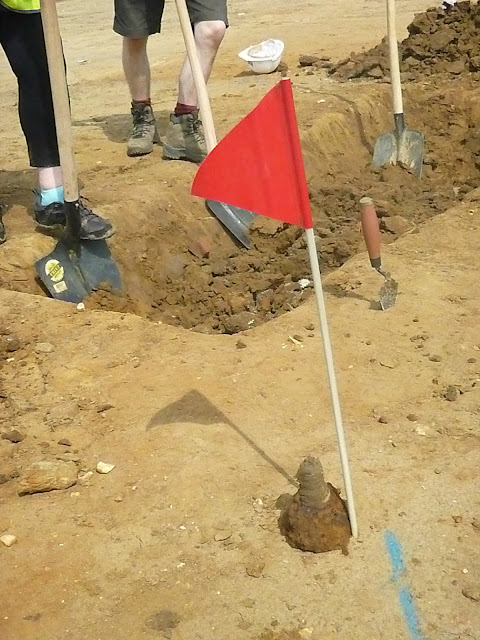Our explosives expert Gehrnard was explaining to me how to recognize French artillery fuses. He made some curvy hand motions and said something about "neeples". That was enough for me to figure it out when we turned up one of these:
This is a nose cap and fuse from a French 75mm shell. These were primarily designed for firing at infantry not fortifications, so the elongated, er, "neeple" meant it went off on impact an inch or two above ground level. The fuse is mechanically simple which actually makes it more dangerous. You can see why Gehrnard's description was a bit anatomically suggestive. Even without knowing Gehrnard.
But was the French design entirely pragmatic? Below are two rifle cartridges. Above a German Mauser round. Note the iron oxide on the bullet, the Germans used steel in part for practicality and in part due to material shortages.
The lower cartridge is a round for the French Labelle rifle. Note the gentle curves. It must have been harder to manufacture, and the Labelle is usually felt to be inferior to contemporary German weapons. So why make it curvy and difficult? Well, they were French and in the era of "La Belle Epoque", that energetic, creative, slightly ridiculous blossoming of French artistic expression. How could they have just settled for straight lines and boring steel?



No comments:
Post a Comment